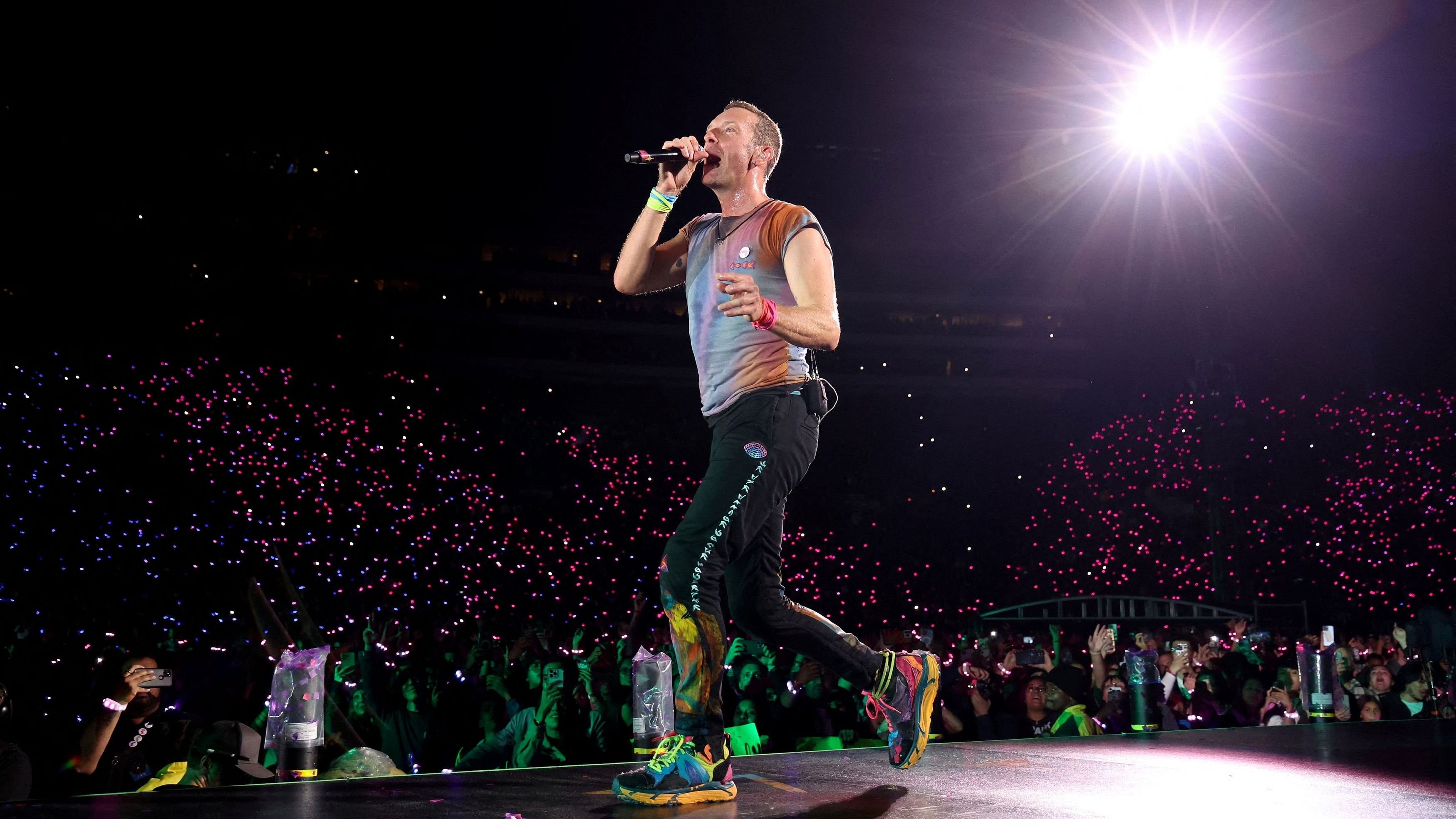
Singer Chris Martin of rock band Coldplay.
Credit: Reuters Photo
By Lara Williams
The great social movements of history all had soundtracks. The civil rights movement had jazz, the blues and Nina Simone; its anthem was We Shall Overcome, originally a 19th-century hymn. The story of gay liberation is intertwined with disco culture, and some of the greatest pop songs have been written or adopted as LGBTQ+ anthems, from Gloria Gaynor’s I Will Survive to Born This Way by Lady Gaga. Music brought people together and helped move the dial on public acceptance by introducing ideas to the mainstream.
Now, the planet itself needs a new social movement. Widespread behavioral changes are needed to reduce carbon emissions, along with public support for net-zero policies. We need to create a culture of environmentalism, which values nature, if we’re to defeat the climate crisis and biodiversity collapse. So, many people — including Brian Eno, the champion of ambient music — are asking: Where are our climate anthems?
Musicians may struggle to to play the same role in the fight for climate action as they’ve done for other societal changes, given the industry’s carbon footprint and the private planes favored by its superstars.
There’s a temptation to dismiss art and culture’s role in climate communication. Isn’t this a science issue? Shouldn’t musicians just shut up and sing? Scientists and their research have been, and will always be, crucial in raising the alarm on fossil fuels and humanity’s damage to the planet. Rapid weather-attribution studies help make climate change visible and present; the development of low-carbon technologies are helping slash emissions.
But who’s more influential to the masses: an atmospheric physicist, or a pop star? Musicians are able to reach far more people — and an entirely different demographic — than scientists or politicians. Nobody needs to hear what musicians think of, say, electricity market reform, but they can be advocates for sustainable lifestyle changes (perhaps Thrift Shop by Macklemore and Ryan Lewis ought to be considered a green tune), raise awareness and compel us to reflect on environmental issues.
Plus, debating whether musicians should use their platforms to talk about the climate crisis ignores how art works. Artists make music about Black rights and queer liberation because these issues affect them, or the people around them, personally. Nina Simone’s Mississippi Goddam came from a place of real rage, as did Strange Fruit, sung by Billie Holiday. In 1985, a supergroup including Bob Dylan, Keith Richards and Pat Benatar recorded Steve Van Zandt’s Sun City under the collective name Artists United Against Apartheid to protest the South African government’s policies. Australian band Midnight Oil had a worldwide hit with 1987’s Beds Are Burning after witnessing the land-rights abuses suffered by Aboriginal communities.
People adopt songs as anthems because the music speaks to themes they can relate to. The same will happen with climate change: as more of us start to feel the impacts of unabated fossil fuel burning, the more open we’ll become to art exploring climate themes. It’s no surprise that one of the recent topical tunes, All the Good Girls Go to Hell by Billie Eilish, references the wildfires that ripped through her home state of California.
Those who doubt whether artists can rouse actual political change ought to be introduced to Taylor Swift. With one Instagram post, today’s most powerful cultural figure inspired more than 35,000 people to register to vote through Vote.org, a nonpartisan nonprofit organization, on a single September day. The number of 18-year-olds registered to vote doubled over the previous year.
But here’s where it gets challenging. Music insiders tell me that artists don’t feel like they can speak up about climate change like they can on other issues, for fear of being accused of hypocrisy.
It’s unlikely that Swift, for instance, will speak out on the environment given there’s entire series of memes around her private jet use. When I wrote about Swift’s Eras tour confronting the climate crisis in Brazil, I received plenty of emails pointing out the carbon footprint of doing 152 shows on five continents. Imagine the criticism Swift receives.
Some musicians have tried facing the allegations head-on. A group of artists including Eno, Radiohead’s Thom Yorke and Mel B (aka Scary Spice) signed an open letter in 2019 which began:
“Dear journalists who have called us hypocrites, you’re right. We live high carbon lives and the industries that we are part of have huge carbon footprints. Like you – and everyone else – we are stuck in this fossil-fuel economy and without systemic change, our lifestyles will keep on causing climate and ecological harm.”
Others are challenging themselves to make the industry greener. Coldplay has partnered with Deutsche Post AG’s DHL to do the logistics of the band’s current world tour while cutting CO2 emissions by at least 50% compared with their 2016-17 run. That means using biofuels, electric vehicles and powering the show with rechargeable batteries. It’s an impressive effort, but one which only a group as successful as Coldplay could undertake at the moment.
So where are our anthems? I’ve created, with help from my Opinion colleagues, a playlist of contenders, but none of them fit the bill. Anthems have meme-able lyrics — memorable, easy to chant and catchy — and they’re imbued with hope. Too many songs about global warming are currently laced with anxiety. If art reflects how we see the world, what does that say about the state of climate action?